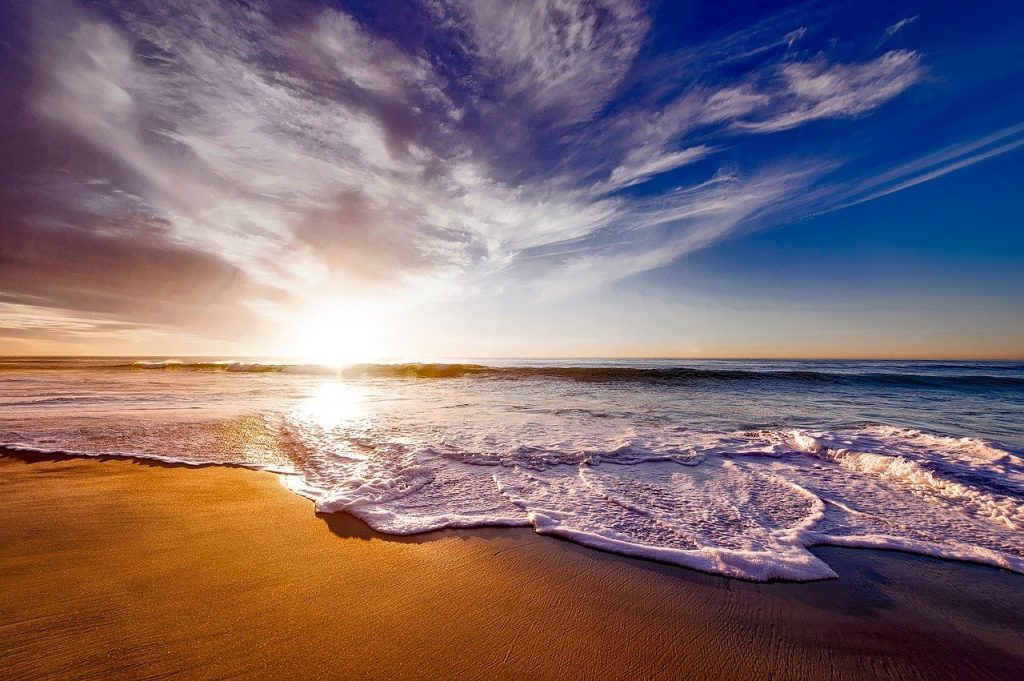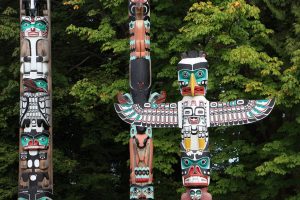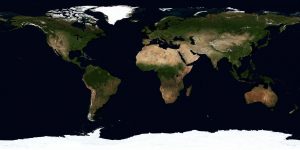Welcome

Welcome this page dedicated to the rich history of the beautiful state of California. We are going to explore the humble beginnings of the state, which is now one of the strongest economies in the world.
Join us on our trip back in time to learn about the fascinating events that led to the creation of the Golden State.
Periods in the History of California
Let us first designate the historical periods that we are going to discuss:
- Pre-colonial period
- European claims to the land
- Spanish colonial period
- Mexican period
- American period
Pre-colonial Period
Broadly speaking, this period begins with the first signs of inhabitation and ends with the first European exploration missions. According to historical estimates, California was first populated around 17,000 BC during the period of migration from Asia to the Americas via the Bering Strait.
Indian Tribes of California

Here are some of the known Indian tribes that lived in California during the pre-colonial period:
- Karok
- Maidu
- Mojave
- Chumash
- Cahuilleno
- Tongva
- Yokuts
- Paiute
- Miwok
- Okwanuchu
- Modoc
- Pomo
This is only a small portion of the peoples that inhabited California. The information about other tribes is unfortunately very scarce. It’s difficult to even estimate how many people lived in California before the colonial period. By the 15th century, there were supposedly between 100,000 and 700,000 Californian Indians or a third of the Northern Amerindian population. There are thought to have been over 135 distinctive dialects.
Due to the mountain ranges of the Pacific Coast, the Native Americans living in California were basically isolated from other tribes in the east and south and thus they bear little cultural and linguistic resemblance to them. Moreover, the unique geography of California comprised of mountains and deserts, made warfare incredibly difficult, which resulted in a relatively peaceful coexistence between the tribes.
There is evidence of wide spread trading among the tribes that used currency such as seashells and woodpecker scalps. A Californian Indian diet consisted of fish, nuts, and wild fruits. Due to the persistent droughts in the region, agriculture couldn’t be sustained.
European Claims to the Land
There were numerous expeditions to California before it was colonized. We’ll tell you briefly about a few attempts to settle the state.
Hernan Cortes and Francisco de Ulloa

The famed Spanish conquistador Hernan Cortes set sail to the mythical island of California, described in the novel Las Sargas, which was filled with riches and beautiful women. In 1535, he landed in Baja California (a peninsula in nowadays Mexico), still believing it’s an island and gave it the name California.
However, he failed to establish a permanent colony there. Still, Cortes sent Francisco de Ulloa north of Baja California to explore new lands, but Ulloa never made it to present-day California as he was killed by an indigenous tribe along the way.
Juan Rodríguez Cabrillo
The first European to explore nowadays California, on behalf of the Spanish Empire, was Juan Rodríguez Cabrillo. Cabrillo’s expedition consisted of three ships that sailed across the west coast all the way to modern-day Oregon. On September 28, 1542, Cabrillo finally set foot in California, arriving at San Diego Bay.
Cabrillo and his men went on to explore Monterey Bey, San Pedro Bay and many other places for the next 3 months. Around Christmas, Cabrillo was wounded while rescuing crewmembers from the attacking Tongva tribe, and he died of gangrene on January 3 1543. The expedition was put to an end and his men returned to Navidad (Mexico) shortly after.
From the Philippines to California
In 1565, the Spanish set up a trading route between Asia and the Americas with the intention to trade precious metals from the latter to the former in exchange for spices and other goods. Their Asian port was Manila, Philippines, which was just conquered, while their American port was most usually California.
Francis Drake
Elizabeth I’s favorite, Sir Francis Drake, also reached the California shore. At the time, England was warring with Spain and Drake was sent to capture Spanish colonies. His eyes were set on California where he landed in 1579.
He established friendly relations with the Miwok tribe and claimed a land, around nowadays Drake’s Bay, for the Queen, naming it New Albion. He left shortly after to go on the second ever world roundtrip. Drake’s men traded and participated in games with the local tribes. Some have argued this was one of the early beginnings of California’s illustrious betting history. These days it is not yet certain when online sports betting in California will be legalized again.
Sebastián Vizcaíno
The Spaniard Sebastián Vizcaíno travelled along the Californian coastline in 1602 and charted the waters. He was the one who named San Diego Bay and he also noted that Monterey had suitable climate and soil for crops.
Spanish Period
Extending from 1769 to 1821, this period encompasses the Spanish rule of California.
Conquest
Strangely, there were no expeditions between the years 1602 and 1769, and thus no attempt to settle the land. Interest towards California was reignited around 1769 when the British and the Russians thought of colonizing it. This made the Spanish act quickly and they sailed from Baja California (nowadays Mexico) to Alta California (nowadays US) in 1769 to formally establish their rule.
Captain Gaspar de Portolá and Franciscan Father Junípero Serra led the Californian expedition. There were 5 units, consisting of soldiers, friars and colonists set to meet in San Diego to begin the process of colonization. Luckily, there were no violent clashes with the natives during the conquest.
Afterwards, Portolá was on his way to Monterey when he accidentally discovered the San Francisco Bay. Previous expeditions failed to do so because the bay’s entrance is usually surrounded by thick mist.
Spanish Missions
Portolá and Serra then founded many Spanish missions across the land. This was the Spanish way of colonizing and controlling a colony. The Spaniards lacked the number of Spanish-born settlers necessary to work the land and create a self-sufficient society, which is why they Christianized and Hispanicized native populations instead.
Moreover, this specific conquest had zero violent conflicts with the natives. The Spanish also practiced intermarriage as opposed to American settlers.
The Spanish mission model allowed religious figures from the Franciscan and Dominican orders to establish Christian mission centers along California. They were usually located within a day’s right away from each other for easier navigation. By 1823, they numbered 21 and many of these missions survive to this day.
Development of the Lands
The first few months after the conquest were critical. There were massive food shortages and many of the colonists suffered from scurvy. Portolá proposed to go back to Baja California if the conditions didn’t improve, but the very same day (March 19, 1770), the ship San Antonio came loaded with supplies.
Although the mission model was successful in keeping the lands and Europeanizing the natives, California remained scarcely populated and there were basically no colonists and friars living in the Central Valley or Sierra Nevada.
The Spanish aimed to change that by offering land grands to soldiers and colonists, as well as foreigners, if they agreed to become Spanish citizens of the Catholic faith. The people who made use of that offer built spectacular ranchos and became a new class of Spanish colonial gentry.
Along with missions and ranchos, there were also presidios. A presidio was a fortified military settlement, which kept the peace in the colony. In order to support this extensive network of missions and presidios, a few pueblos (towns) popped up. They’d go on to become Los Angeles, San Francisco, San Diego, Santa Cruz, Santa Barbara, and San Jose.
Group Relations
Despite the fact that Spanish colonists intermingled with Native American and African populations, there was a racial/ethnic hierarchy in place. Still, this type of division was much less palpable in California. However, there was a class hierarchy instead, which often mirrored the ethnic separation in other Spanish colonies.
At the top were the big land owners, most often Spanish pure-bloods, and the missionaries. They were followed by mestizos (mixed people) owning lands, who tended to downplay their mixed heritage to advance in society, and Spanish-born working people who didn’t own their land. Last were the natives who had just been Christianized.
The relationship between these groups of people and the Indian tribes of California was a difficult one. There were regular violent clashes and theft, which increased the necessity of presidios. Although the natives could go on to join a mission, once there, they weren’t allowed to leave, which made the situation even harder to deal with.
Mexican Period
The Mexican period covers the years between 1821 and 1848 and it shows what changed and what remained the system during the brief Mexican rule of California.
War of Independence
In 1808, Napoleon invaded Spain and dethroned King Charles IV and put his brother Joseph in his place. This created a crisis not only in Spain, but also in its dominions. The Supreme Central Junta of Spain and the Indies was established shortly after to rule in the name of the deposed king. The junta was also supposed to give more power to local authorities.
The tension was running high, and so was the conflict between American-born Spaniards and Peninsular (Spanish-born) Spaniards. The latter overthrew Viceroy Jose de Iturrigaray later in 1808, while the former was planning to overthrow the rule of the Spanish Crown itself.
The Spanish forces underestimated the size and the determination of the rebels. Although there wasn’t a single independence war, there were many revolts for the next 10 years, which ultimately ended with the creation of the Mexican Empire (later Mexican republic) on September 27, 1821. According to the proclamation, Mexico was to be given Baja and Alta California.
Mexican Rule of California
Much like Spain, however, federal Mexico didn’t exactly govern Alta California. This was left to the local authorities, but in general, there was a sense of lawlessness in the state. Society was formed around the big ranchos whose owners resembled European feudal lords. Many foreigners also settled in California coming from the United States, Russia and other yet-to-be-claimed territories.
Meanwhile, the Mexican government was trying to establish itself but struggled with many revolts, civil wars and pressure from Spain that it didn’t have the capacity to deal with Alta California. Some Californios tried to re-join Spain, but Mexico managed to stop that. However, the government appointed an unpopular governor, which made matters worse.
In 1836, Juan Batista Alvorado led a revolt against Mexico and even captured Monterey (the then-capital of California). California became de-facto autonomous, despite the fact that Alvorado agreed to remain part of Mexico.
In the following years, more and more settlers went to Alta California. Some of them became wealthy land-owners able to raise a private militia. Alvorado distrusted them and especially the ones who didn’t want to become naturalized Mexican citizens.
His distrust heightened when the US Navy accidentally captured parts of California in 1842 when Commadore Jones thought that the US declared war on Mexico. Jones confessed his mistake and nobody died in this “conquest”, but Alvorado now had legitimate fears of annexation.
Meanwhile, the federal Mexican government was toying with the idea of selling Alta California. They considered offering the deal to the United States, Russia or Britain. Simultaneously though, there were rumors in Alta California that Mexico would take away their autonomy and also purge foreigners.
Mexican-American War
Mexico had a reason to worry about Americans in California. Afterall, the American settlers in Texas rebelled against Mexico and created an autonomous republic of Texas in 1836. The matters got worse in 1846 when Texas joined the US. That’s because there were disputed territories even after the war for Texas ended, and now the US government could invade Mexico.
President James K. Polk famously tried to buy Alta California for $25 million, but his offer was rejected. Some, including Abraham Lincoln, argued that Polk purposefully ignited the Mexican-American war to expand the US.
He did so by sending a small garrison into the disputed territories between Texas and Mexico. The American soldiers were greatly outnumbered by the Mexican army; some were killed, while others captured. Polk used this event as justification to start a war since Mexico shed American blood on American soil.
The US Congress declared war on April 25, 1846. The American army soon invaded Mexico through Texas. Meanwhile, a group of settlers declared California to be an independent republic on June 14, 1846, raising the Bear Flag in Sonoma, CA.
The republic was short-lived; only 25 days later, the US Army entered California and raised the star-spangled banner. The Californian rebels were actually encouraged by US Army Brevet Captain John C. Frémont to revolt; he later helped the US to win Alta California.
Many lands in California such as Monterey and San Francisco were captured peacefully. However, it didn’t take much to capture the rest of the state. The Treaty of Cahuenga was signed on January 13 1847, by the Californios, which officially made California part of the US. A year later, the war with Mexico also ended.
American period

In this last section, we discuss how California developed as an American state.
Statehood
After the war, Alta California was divided into five territories – California, Arizona, Colorado, Nevada, and Utah (New Mexico and Wyoming were created later). Initially, California had a military governorship ruling from 1846 to 1850.
It took a few years for California to become a state due to the heated discussions in Congress regarding the newly annexed territories. Slave states and free states fought over the issue of slavery in the newly acquired lands.
Eventually, the Compromise of 1850 resolved some of these problems. Texas was a designated slave state, while California a free one. Still, to keep the balance of pro- and anti-slavery senators, California agreed to send one proponent and one opponent to the US Senate.
The Constitution of California was adopted in 1849. A year later, California officially became the 31st state on September 9, 1850.
Gold Rush
California was very scarcely populated before the annexation. This changed in 1848 when gold was first discovered by James Marshall in Sutter’s Mill in Coloma, CA. The land itself belonged to John Sutter Sr., but instead of bringing him unimaginable wealth, the gold discovery only brought him troubles.
Pioneers from Oregon and Hawaii first heard of the discovery and quickly went to California. They were followed by people from all around the US. This meant that Sutter had to deal with intruders who were stealing and damaging his properties. His son, John Sutter Jr, left his home in Switzerland to assist his father. In 1848, he created the City of Sacramento, which became California’s state capital in 1854.
Sacramento grew immensely in the first 6 years of its existence, reaching 10,000 residents by 1854. San Francisco experienced an even bigger influx of people as it was the only port in California to serve as a national border. Gold-seekers from Asia and other states migrated to San Francisco whose population rose from 1,000 in 1848 to the staggering 25,000 in 1849.
The gold-seekers were called forty-niners, signaling the beginning of the Gold Fever in 1849. The local infrastructure couldn’t sustain the influx of forty-niners and many of them lived in makeshift cabins and tents.
The initial gold-seekers only had to pan the gold and they could earn thousands of dollars every day. However, as more people from Latin America, Europe and Asia moved to California for the same reason, the reserves of the most accessible gold soon ended. This prompted the government to impose high taxes on foreign gold-seekers, while American forty-niners often attacked them.
They also attacked native people whose habitat was being destroyed by the growing number of new settlements. The sheer number of newcomers and the lack of strong centralized authority turned California into the Wild West (until California’s constitution was drafted).
By 1850, placer mining (panning golf from rivers) was diminishing. The forty-niners started hydraulic mining instead, which destroyed the nature around but turned great profit. That’s when gold mining became an industry.
This growing industry negated the creation of railroads all around the state, starting in 1855. Soon after, the building of a transcontinental railroad connecting California to the east coast commenced with the first train leaving on May 10, 1869.
20th century to Present Day
The Gold Rush paved the way for rapid industrialization with more and more people moving to California. On top of that, agriculture also made significant profits especially after the building of the Transatlantic railroad. In fact, California even sent food to Central Europe during WWI.
Beginning in 1908, many film studios relocated from the east coast to California due to the mild climate. Another reason why they moved was Edison who held many motion picture patents, which regularly halted productions. California, however, didn’t enforce them. Soon Hollywood became the Mecca of American cinema and with it came massive profits and even more people. The music industry soon followed lead. Tourism also garnered a lot of money.
In 1939, Stanford students William Hewllet and David Packard (yes, the HP duo) created the audio oscillator. Their success prompted Stanford to establish the Stanford Research Institute, which produced other successful companies like General Electric, Kodak and Lockheed. Thus, the Silicon Valley was born. Apple, Microsoft, PlayStation and many others started off there and shot California’s economy to the skies.
Now, California is the most populous and richest state in the US, boasting of $3 trillion GDP. If it was its own country, as the Bear Flag rebels wanted, it would have been the 5th richest country on Earth.
Museums and Historical Monuments to Visit
We wanted to end this article with a list of museums and other places of interest that you must if you’re in California:
- The Getty Center, LA
- Disneyland, LA
- Universal Studios, LA
- California State Railroad Museum, Sacramento
- Griffith Observatory, LA
- SFMOMA, San Francisco
- de Young, San Francisco
- Alcatraz, San Francisco
- Mission Dolores, San Francisco
- Mission San Juan Bautista, San Juan Bautista
- Colton Hall Museum, Monterey
- The Tech Interactive, San Jose
- Bodie (Ghost Town)
- North Bloomfield (Ghost Town)
